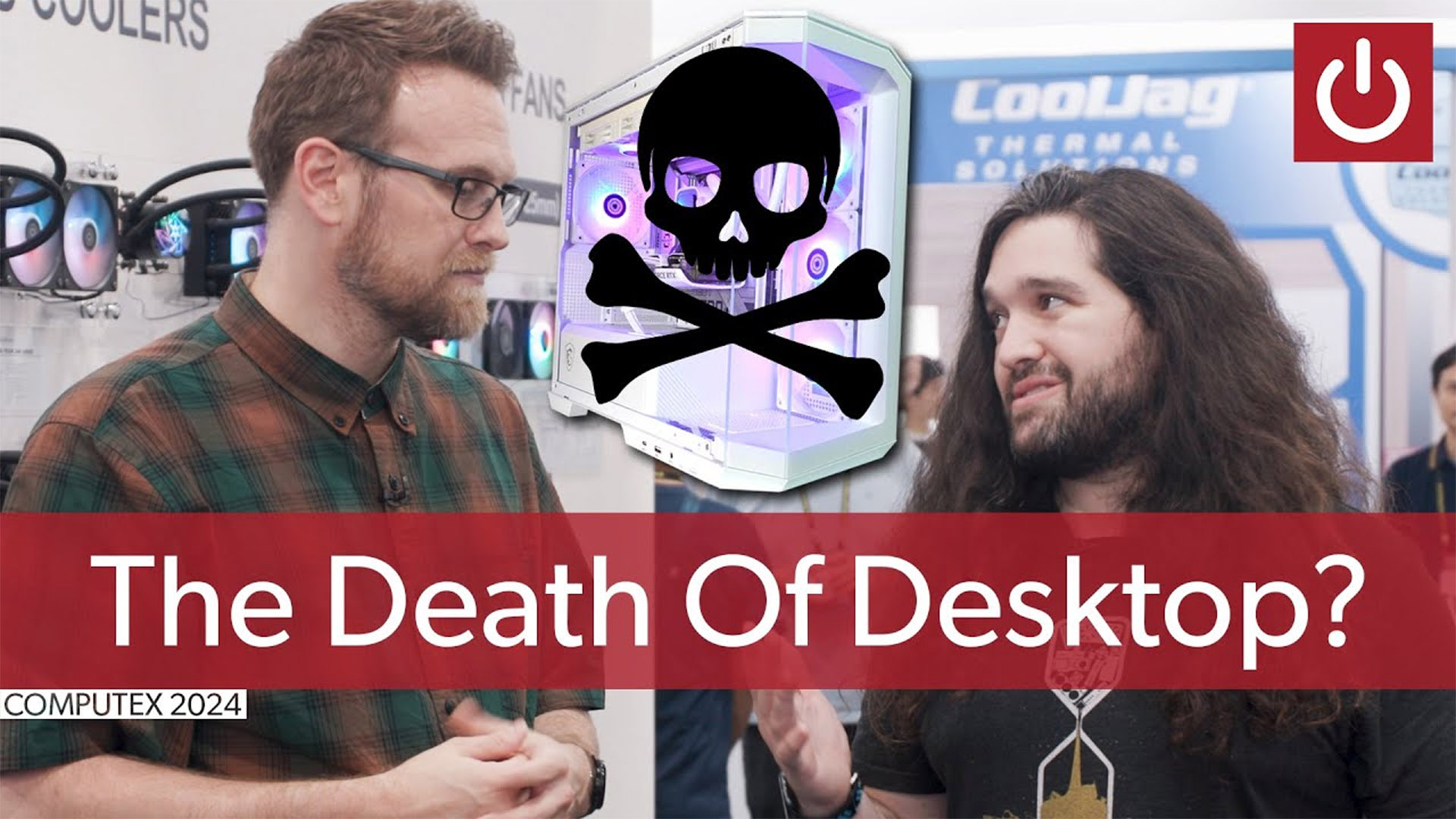
The Desktop PC: Still Kicking or Nearing its Last Stand?
For years, the tech world has echoed a familiar refrain: "The desktop PC is dying." This declaration has become so commonplace that some writers covering the topic may have never known a time when its demise wasn’t being predicted. Now, the rise of Arm-based hardware, spearheaded by Qualcomm and met with a staunch defense of x86 architecture from Intel, has reignited this long-standing debate.
At the recent Computex trade show, Adam from PCWorld engaged Steve from GamersNexus in a conversation about the future of the desktop PC. The consensus is that, in the consumer market, standalone desktop PCs will remain a smaller segment compared to the dominant laptop. However, the current wave of speculation is fueled by Qualcomm’s advancements in Snapdragon chips and Microsoft’s strong embrace of Arm architecture.
Microsoft’s latest Surface line prominently features Arm-based processors, and many other Original Equipment Manufacturers (OEMs) are following suit. This begs the question: what does this trend mean for desktop PCs and the enthusiasts who cherish the ability to customize and upgrade their machines?
Steve from GamersNexus expresses his concern about a potential split in the market, assuming a complete and immediate transition to Arm hardware doesn’t occur. This scenario would potentially lead to difficulties in software and hardware development support. A divided market might negatively impact the enthusiast DIY community, a core segment of the desktop PC world.
The prospect of desktop PC hardware, and x86 hardware in general, becoming a niche market is a bleak one. We have already witnessed the decline of upgradeable laptop memory, with newer Intel processors integrating it directly into the processor package, often with a restricted upper limit. The thought of desktop PCs suffering a similar fate, or fading into irrelevance, is alarming to many.
This isn’t the first time the tech community has faced such a crossroads. Intel and AMD are continually pushing the boundaries of desktop PC performance. AMD, in particular, has even created specific sub-categories dedicated to gaming desktop PCs. Steve recognizes this pattern: "But this has been a topic forever, right? ‘PCs dying?’ I guess the question I would have is like, is it different this time? Or is it just another, ‘Here’s a different reason it’s dying.’"
There remains the possibility of a comprehensive market shift towards Arm architecture, in which desktop PCs simply follow suit. If this were to happen, manufacturers could theoretically maintain hardware modularity and upgradeability, assuming they believe the market is substantial enough to justify the effort. However, the economic incentives would have to be in place.
Ultimately, the future of the desktop PC remains uncertain. Will it adapt and survive, or will it gradually fade away, replaced by the convenience and portability of laptops and other devices? The answer likely hinges on several factors, including the continued innovation from Intel and AMD, the evolution of Arm-based processors, and the overall demand from consumers and enthusiasts.
The concerns highlighted by Steve regarding fragmented development support are particularly relevant. If developers prioritize Arm-based platforms due to their increasing market share, it could lead to a decline in software optimization and hardware options for desktop PCs. This, in turn, could further accelerate the decline of the desktop PC market.
The key lies in whether the desktop PC can maintain its distinct advantages over other platforms. Its strengths have traditionally been superior performance, customization options, and upgradeability. If these advantages are eroded, its appeal will diminish.
The enthusiast community also plays a crucial role in the survival of the desktop PC. Their passion and willingness to experiment with new hardware and software can drive innovation and create a demand for high-performance desktop PCs.
Furthermore, the rise of cloud gaming and remote work could influence the future of the desktop PC. If users can access demanding applications and games through the cloud, the need for powerful local hardware may decrease. However, many users still prefer the responsiveness and reliability of running applications locally.
While the desktop PC might not dominate the consumer market as it once did, it still serves a vital role for professionals, gamers, and enthusiasts. The question is not whether it will survive, but in what form it will evolve. Will it become a niche product for specialized tasks, or will it adapt to the changing landscape and maintain its relevance in the broader computing ecosystem?
The ongoing battle between Intel and AMD, the rise of Arm-based processors, and the shifting demands of consumers will all shape the future of the desktop PC. As Steve from GamersNexus points out, the death of the desktop PC has been predicted for decades. But perhaps this time, the rise of Arm presents a more significant challenge. The industry is at a pivotal moment, and the choices made by manufacturers, developers, and consumers will determine the fate of this iconic computing platform.
Regardless of the outcome, the desktop PC has left an indelible mark on the history of technology. It has empowered users to create, innovate, and explore the digital world. Whether it continues to thrive or eventually fades away, its legacy will endure. To stay informed about the ongoing evolution of the PC landscape, PCWorld on YouTube is a valuable resource.
Michael, a technology journalist with a decade of experience, adds a personal touch to this coverage. His passion for keyboards and building mechanical boards showcases the dedication of desktop enthusiasts. His background covering Apple, ZTE, and other major tech brands provides a broad perspective on the industry. Living in Pennsylvania, Michael enjoys kayaking and brings a well-rounded approach to his technology reporting.
